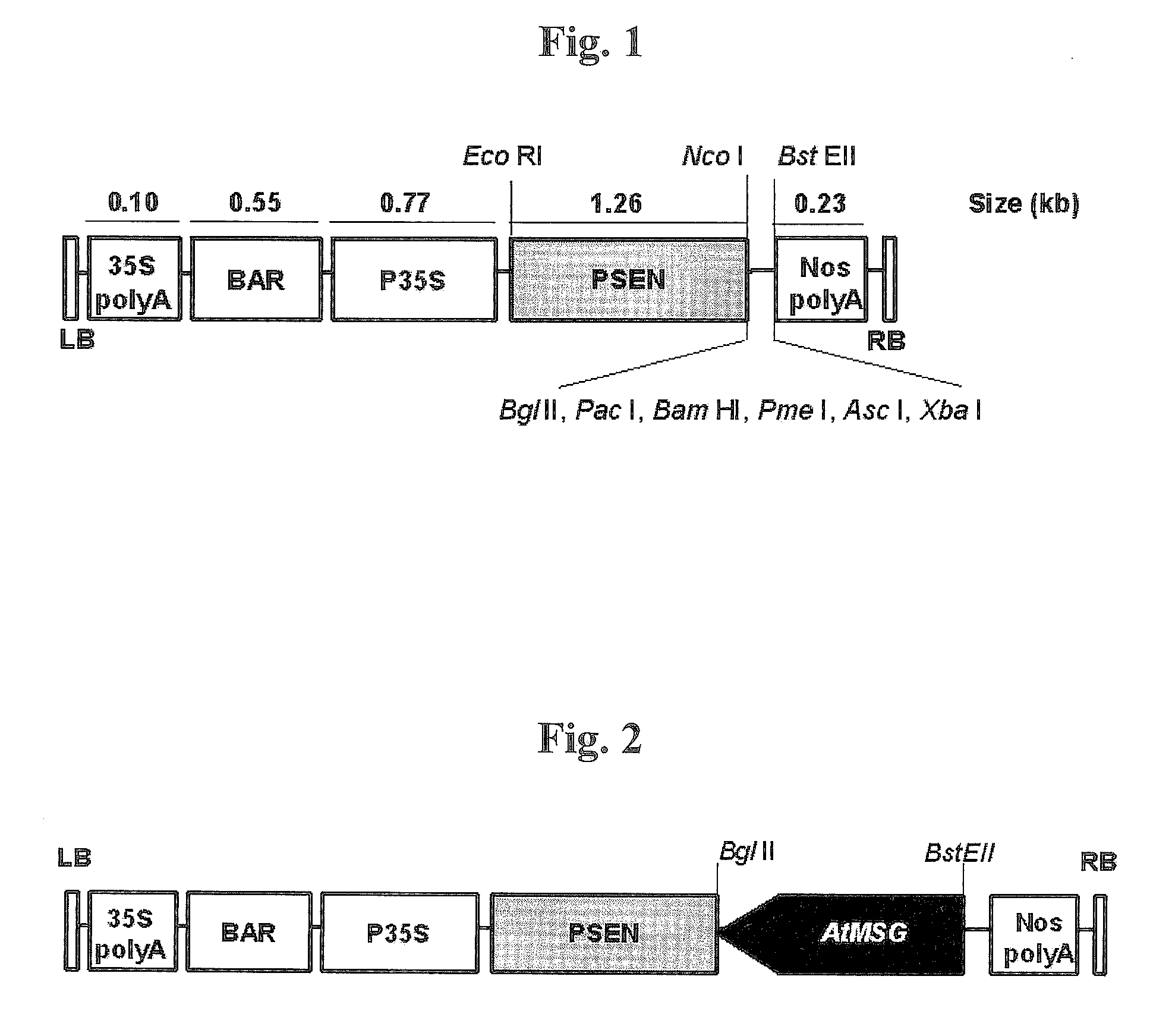Polypeptide having Methionine Synthesis Function, Polynucleotide Encoding the Polypeptide, and Those Use
a technology of polypeptides and synthesis functions, applied in the field of polypeptides having a methionine synthesis function and coding polypeptides, to achieve the effect of suppressing the growth and suppressing the growth of plants
- Summary
- Abstract
- Description
- Claims
- Application Information
AI Technical Summary
Benefits of technology
Problems solved by technology
Method used
Image
Examples
example 1-1
Cultivation and Nurturance of Arabidopsis thaliana
[0061]Arabidopsis thaliana was cultured in soil in pots or in an MS medium (Murashige and Skoog salts, Sigma, USA) containing 2% sucrose (pH 5.7) and 0.8% agar in Petri dishes. When using pots, the plants were cultivated at 22° C. under a light-dark cycle of 16 / 8 hours in a growth chamber.
example 1-2
RNA Isolation and cDNA Library Construction
[0062]In order to construct Arabidopsis thaliana cDNA libraries, first, total RNA was isolated from Arabidopsis thaliana leaves in various stages of differentiation using a TRI reagent (Sigma, U.S.A.). poly(A)+ RNA was purified from the isolated total RNA using an mRNA purification kit (Pharmacia, U.S.A.) according to the enclosed instructions for the protocol. Double-stranded cDNA was prepared from the poly(A)+ RNA with the aid of a cDNA synthesis kit (Time Saver cDNA synthesis kit, Pharmacia, U.S.A.), with NotI-(dT)18 serving as a primer.
example 1-3
Isolation of a Gene Encoding a Polypeptide Having a Methionine Synthesis Function
[0063]Based on the amino acid sequence of a putative vitamin B12-independent methionine synthesis enzyme (GenBank accession number NM 180176) of Arabidopsis thaliana, a sense primer, represented by SEQ. ID. NO. 4, containing an BstEII site, and an antisense primer, represented by SEQ. ID. NO. 4, containing a BglII site, were synthesized. Using these two primers, a full length cDNA containing a 5′- and a 3′-UTR was amplified through PCR (polymerase chain reaction) from the cDNA library constructed in Example 1-2.
[0064]The cDNA was analyzed to have a 2,298 bp open reading frame (ORF) of SEQ ID NO. 3, comprised of ten exons, encoding a polypeptide consisting of 765 amino acid residues with a molecular weight of about 84.6 kDa, and was called AtMSG (Arabidopsis thaliana methionine synthase in Genomine) or AtMSG gene. Its protein is expressed as “AtMSG” or “AtMSG protein. The AtMSG protein encoded by the gen...
PUM
| Property | Measurement | Unit |
|---|---|---|
| Fraction | aaaaa | aaaaa |
| Antisense | aaaaa | aaaaa |
Abstract
Description
Claims
Application Information
 Login to View More
Login to View More - R&D
- Intellectual Property
- Life Sciences
- Materials
- Tech Scout
- Unparalleled Data Quality
- Higher Quality Content
- 60% Fewer Hallucinations
Browse by: Latest US Patents, China's latest patents, Technical Efficacy Thesaurus, Application Domain, Technology Topic, Popular Technical Reports.
© 2025 PatSnap. All rights reserved.Legal|Privacy policy|Modern Slavery Act Transparency Statement|Sitemap|About US| Contact US: help@patsnap.com



